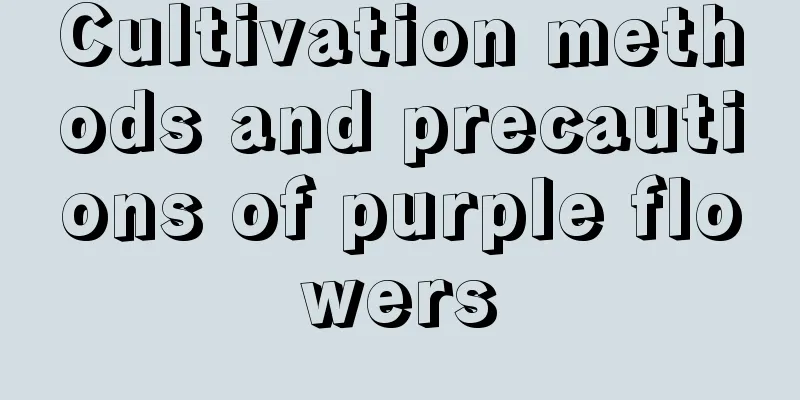Cultivation methods and precautions of purple flowers

How to grow purple flowerssoilPurple lily has no strict requirements on soil and can tolerate poor soil. But it blooms vigorously on fertile and well-drained sandy loam or loam. The culture soil should be mixed with leaf mold, sandy soil and garden soil in a ratio of 1:1:1. Apply sufficient fully decomposed compost and a small amount of bone meal as base fertilizer at the bottom of the pot. Temperature and lightTemperature: Purple lily likes high temperature and is heat-resistant. The suitable temperature for its growth is between 24-30 degrees Celsius. Light: Purple jasmine likes light, and full sun or half sun are ideal for cultivation, but it should not be shaded. Water and fertilizer managementWatering: When watering, just keep the soil in the pot moist, but during the growing season and dry weather, you need to water more frequently and sprinkle water around the pot frequently to increase the air humidity. The soil in the pot should not be too wet, otherwise the bulb will easily rot. Fertilization: Generally, apply diluted liquid fertilizer 2-3 times during the growing period to promote the growth and development of the seedlings. When the plants are about to bud and bloom, apply phosphorus and potassium fertilizers 1-2 times to ensure that the seedlings have sufficient nutrition during the bud and flowering periods. This will not only make the flowers large and colorful, but also promote the development of bulbs. When planting in a large area, attention should be paid to ventilation and proper shading. If planting in a small area or in potted plants, for ornamental varieties with many flowers and thin and weak branches, a support should be set up to prevent the branches from breaking. Reproduction methodPurple jasmine can be propagated by many methods, including scale propagation, bulb propagation, ball bud propagation, and sowing propagation. Things to note when raising purple liliesCommon diseases and pests of purple jasmineCommon pests of purple lilies: aphids, leafhoppers Common diseases of purple jasmine: mosaic disease, bulb rot, spot disease Purple lily flower maintenanceThe purple lily is a perennial herb of the genus Allium in the Liliaceae family. It has a terminal cyme inflorescence. The slender and upright flower stems emerge from the leaves, and there are dozens of pink-purple or lavender flowers on the top, which is quite beautiful. The purple lily blooms in May in East China and the flowering period can last until November. During the flowering period of purple lilies, it is necessary to add appropriate amount of farm compost such as bean cake and vegetable cake to prolong the flowering period and make the flowers bright and beautiful. |
<<: Cultivation methods and precautions of lisianthus
Recommend
Do I need to repot the fortune tree when it grows up? When is the best time to repot it?
1. Should I change the pot? Of course, the money ...
White crystal chrysanthemum pests and control methods
Pests of white crystal chrysanthemum: aphids Aphi...
How to remedy the yellowing of cycad leaves
1. Acidic solution Reason: Cycas revoluta needs a...
Flower language of Clivia
1. Flower Language The flower language of Clivia ...
When is the best season to plant tulips?
Tulip is a famous ornamental flower with rich col...
What is the best season to plant chrysanthemums? What is the best month to transplant chrysanthemums?
Chrysanthemum planting requires the use of soil w...
How to manage winter melon planting to achieve high yield?
As a vegetable with a long history, winter melon ...
These “3 types” of water are “resurrection water”. Give the flowers some and all the yellow leaves and rotten roots will disappear!
Many times, the flowers and plants in our homes h...
How to grow carrots
1. Maintenance methods 1. Temperature: Carrots ar...
Where do jasmine seeds come from?
Where do jasmine seeds come from? Jasmine is gene...
Can Sabah Jaboticaba be planted in pots?
Can Sabah Jaboticaba be grown in pots? Sabah Jabo...
Can Wisteria be grown in the north?
Can wisteria be grown in the north? Wisteria can ...
How to Green the Balcony
The greening layout of the balcony generally has ...
How to grow Christmas cactus (home method) and how to water it
1. Watering The root system of the self-rooted Ch...
When does summer violet bloom?
Summer pansy blooming season Summer pansy is a he...









